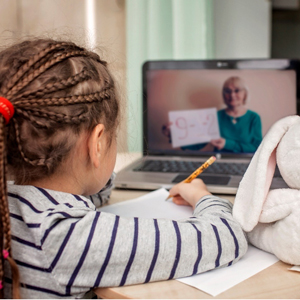By Preston Fassel
Kids are spending a lot of time on digital devices these days. That’s not some bitter Xennial pot-shot at the ubiquity of cell phones and tablets in the hands of kids from 18 down to three. Rather, it’s a simple statement of fact regarding the plight of a generation who’ve been handed the moniker Zoomers—that crop of kids who’re attending school in the age of COVID. Even with some schools beginning to bring students back to the classroom, hybrid learning plans mean that students are still engaging with their teachers via webcams in the classroom to allow for simultaneous interaction with classmates at home. |
It’s time for us to start having serious discussions about anti-fatigue lenses with our patients and parents. While we can’t change the global circumstances affecting us, we can change how we respond to them, and we’ve reached a point in the history of education where every student in every classroom—or home-classroom—should be wearing some kind of HEV blocking/anti fatigue lens. In many cases, this will be as simple as a conversation about changing the AR treatment already present in patients’ glasses.
If your patients don’t require correction, a discussion is still in order about plano anti-fatigue glasses. They don’t have to be a pricey investment for cash-strapped parents. Numerous manufacturers have come out in recent years with attractive, affordable, plano anti-fatigue glasses you can stock in your practice and have on hand. You also can check with your lab to see if they have a discount for HEV lenses that you can pass on to the patient. We’re all in this together, and if you can help someone out, please do.
This is a time for us to be doing our due diligence regarding eye strain and fatigue and letting parents and patients know how extended and excessive use of digital devices can impact them, particularly because younger eyes are more vulnerable. Parents make the decisions regarding their children’s eye health, but they’ll probably thank you for the heads up. You’ll not only have demonstrated your commitment to your profession but earned respect and loyalty from your patients that will endure.
Learn more about children’s vision with our CE, Controlling Myopia in Children, at 2020mag.com/ce.













